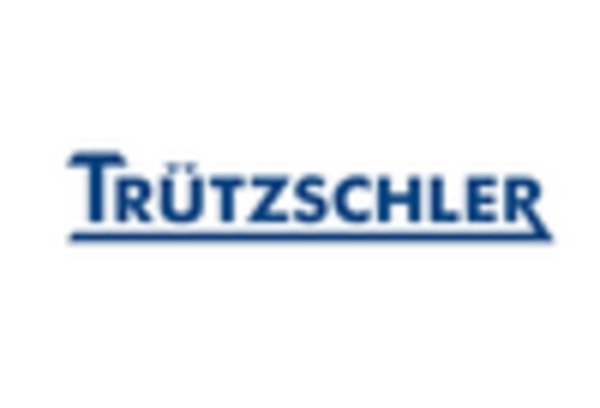Customization and Consumer Preferences
The demand for customized textile products is on the rise, significantly influencing the Textile Machinery Market. Consumers are increasingly seeking unique designs and personalized textiles, prompting manufacturers to adapt their production processes. This shift necessitates machinery that can handle small batch sizes and diverse fabric types efficiently. As a result, the market for flexible and customizable textile machinery is projected to expand, with growth rates potentially reaching 10% in the coming years. This trend suggests that manufacturers who invest in adaptable machinery will likely gain a competitive edge, further propelling the evolution of the Textile Machinery Market.
Rising Demand for Sustainable Textiles
The increasing consumer awareness regarding environmental issues appears to drive the Textile Machinery Market towards sustainable practices. Manufacturers are now focusing on eco-friendly materials and processes, which necessitates advanced machinery capable of producing sustainable textiles. The market for sustainable textiles is projected to grow at a compound annual growth rate of approximately 9% over the next five years. This shift not only aligns with consumer preferences but also encourages manufacturers to invest in innovative machinery that reduces waste and energy consumption. As a result, the demand for textile machinery that supports sustainable production methods is likely to rise, indicating a significant trend within the Textile Machinery Market.
Technological Advancements in Machinery
Technological innovations are reshaping the Textile Machinery Market, with advancements in automation and smart technologies playing a pivotal role. The integration of IoT and AI in textile machinery enhances operational efficiency and reduces production costs. For instance, automated weaving and knitting machines are becoming increasingly prevalent, allowing for higher precision and speed. The market for smart textile machinery is expected to witness substantial growth, with estimates suggesting a rise of around 15% annually. This trend indicates that manufacturers are likely to prioritize investments in cutting-edge technologies to remain competitive, thereby driving the overall growth of the Textile Machinery Market.
Growth of the Fashion and Apparel Sector
The fashion and apparel sector continues to expand, which appears to be a significant driver for the Textile Machinery Market. As global fashion trends evolve, the need for innovative textile solutions becomes paramount. The apparel market is projected to grow at a rate of approximately 5% annually, leading to increased demand for advanced textile machinery that can produce high-quality fabrics efficiently. This growth indicates that manufacturers must invest in state-of-the-art machinery to meet the evolving needs of the fashion industry. Consequently, the synergy between the fashion sector and textile machinery is likely to foster further advancements within the Textile Machinery Market.
Emerging Markets and Economic Development
Emerging markets are experiencing rapid economic development, which seems to be positively impacting the Textile Machinery Market. Countries with growing economies are increasingly investing in their textile sectors, leading to heightened demand for modern machinery. For instance, regions in Asia and Africa are witnessing a surge in textile production capabilities, with investments in machinery expected to rise by approximately 12% over the next few years. This trend indicates that as these markets develop, the demand for efficient and advanced textile machinery will likely increase, thereby driving growth within the Textile Machinery Market.


















Leave a Comment